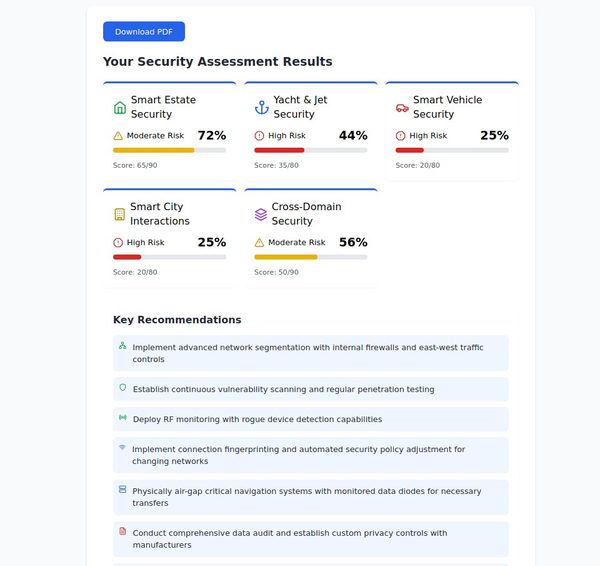Enhancing Home Security with Machine Learning: Predictive Analytics for Proactive Protection

Summary: This article explores how machine learning and predictive analytics can enhance home security. It discusses how machine learning algorithms can analyze data to detect patterns and predict potential security threats, enabling proactive protection measures.
Introduction: In the era of smart homes, traditional security systems are evolving to become more intelligent and proactive. Machine learning, a subset of artificial intelligence, revolutionizes home security by enabling predictive analytics and proactive protection measures. In this article, we will explore how machine learning enhances home security, leveraging predictive analytics to detect potential threats before they occur and ensure proactive protection for homeowners.
Understanding Machine Learning in Home Security:
Machine learning involves the use of algorithms and statistical models that enable computers to learn from data and make intelligent decisions without explicit programming. Here's how it transforms home security:
a. Data Analysis: Machine learning algorithms analyze vast amounts of data collected from various security devices, including cameras, sensors, and smart locks. This enables the system to learn patterns, anomalies, and potential security risks.
b. Real-time Decision-making: Machine learning algorithms process data in real-time, enabling quick decision-making and instant response to security events or potential threats.
c. Continuous Improvement: Machine learning models continuously learn from new data, refining their predictions and improving the overall accuracy of security systems over time.
Predictive Analytics for Proactive Protection:
Machine learning enables predictive analytics, which is a powerful tool for proactive protection in home security. Here's how it enhances home security systems:
a. Anomaly Detection: Machine learning algorithms can detect abnormal patterns or behaviors that deviate from the norm, such as unusual motion patterns or unexpected access attempts. By identifying anomalies, potential security threats can be flagged in real-time.
b. Threat Forecasting: Machine learning models can analyze historical data and patterns to forecast potential security risks. For example, by analyzing crime rates in the neighborhood or identifying trends in burglaries, the system can provide proactive alerts and recommend additional security measures.
c. Behavior Analysis: Machine learning algorithms can learn the typical behavior of residents, recognizing their daily routines and activity patterns. When deviations occur, such as unexpected entry or unusual activity during unusual times, the system can raise alerts and trigger appropriate actions.
d. Environmental Monitoring: Machine learning algorithms can analyze data from environmental sensors, such as smoke detectors or carbon monoxide sensors, to identify hazardous situations and provide early warnings, enabling proactive responses.
Intelligent Video Surveillance:
Machine learning greatly enhances the capabilities of video surveillance systems, making them more intelligent and efficient. Here's how machine learning improves video surveillance for home security:
a. Object Recognition: Machine learning algorithms can identify and classify objects captured by surveillance cameras, distinguishing between humans, vehicles, and other items. This enables the system to focus on relevant events and minimize false alarms.
b. Facial Recognition: Machine learning algorithms can analyze facial features and match them against a database of known individuals, allowing for automated identification and authentication. This enhances access control and improves overall security.
c. Activity Detection: Machine learning models can detect specific activities or events of interest, such as loitering, package theft, or vandalism. When such activities are detected, the system can alert homeowners immediately or notify authorities for timely intervention.
Integration with IoT and Smart Home Devices:
Machine learning integrates seamlessly with other IoT devices and smart home systems, creating a comprehensive and intelligent home security ecosystem. Here's how it facilitates integration:
a. Data Fusion and Correlation: Machine learning algorithms can analyze data from multiple sensors and devices, correlating information to understand the security situation better. For example, combining data from motion sensors, door sensors, and cameras can provide a comprehensive picture of a potential security event.
b. Adaptive Automation: Machine learning models can trigger automation sequences based on specific security events or user-defined rules. For example, if a suspicious activity is detected, the system can automatically lock doors, turn on lights, and notify the homeowner.
c. Contextual Awareness: Machine learning algorithms can learn from contextual data, such as weather conditions, time of day, or occupancy patterns, to make more informed security decisions. This enables the system to adapt its behavior based on the current context.
Privacy and Ethical Considerations:
While machine learning offers significant benefits for home security, addressing privacy and ethical concerns is essential. Here are key considerations:
a. Data Security: Safeguarding the collected data and ensuring secure communication between devices and systems are critical to maintaining privacy and preventing unauthorized access.
b. Transparency and Explainability: Machine learning algorithms should be transparent and explainable, allowing homeowners to understand how decisions are made and ensuring accountability.
c. User Control: Homeowners should have control over the data collected, how it is used, and the ability to modify or delete their data as needed. Clear consent and privacy policies should be in place to ensure user confidence.
Conclusion: Machine learning and predictive analytics offer significant advancements in home security, enabling proactive protection, intelligent video surveillance, and seamless integration with IoT devices. By harnessing the power of machine learning, homeowners can enjoy enhanced security, early threat detection, and peace of mind knowing that their homes are protected by intelligent systems that continuously learn and adapt. As technology evolves, the synergy between machine learning and home security will continue to revolutionize the way we safeguard our homes, making them smarter, safer, and more secure.





